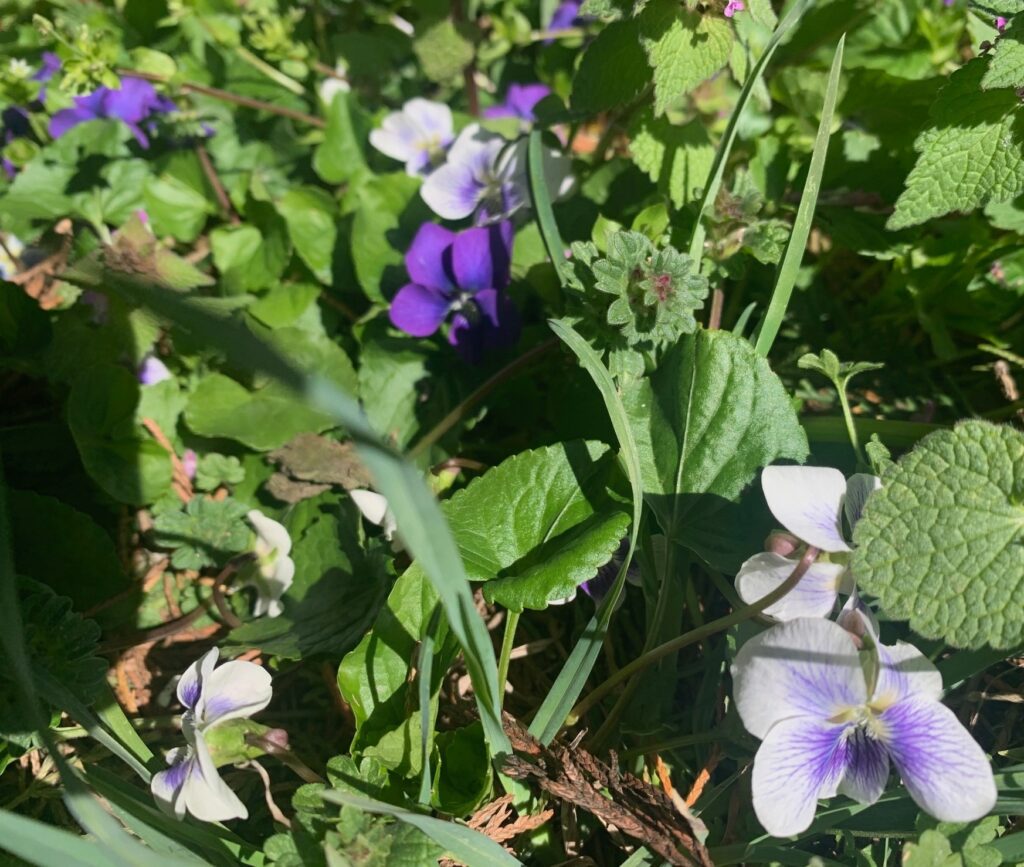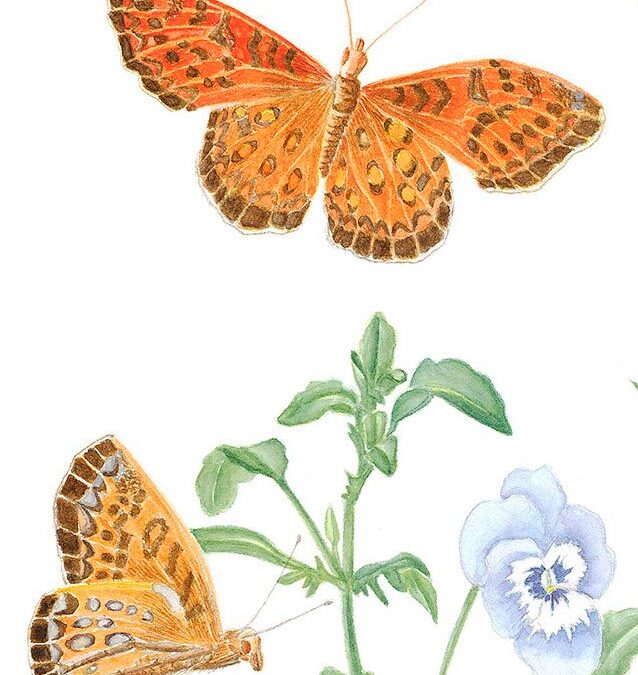The violets are blooming here in West Virginia, reminding me that they are important plants for all the Fritillary butterflies all over the world.
Violets are easy to plant and usually grow low enough to flower beneath the lawn mowers that cut off the leaves of most plants. They also grow along the edges of trails, where I found these little white and violet flowers. Violets like a partially shaded area that doesn’t get too dry, but they are tough little plants and can be encouraged to grow at the edge of many walking paths. I’ve even seen them blooming in public lawns.
What are Fritillary butterflies? This family of orange butterflies live all over the world. They are common in Europe, Asia and North and South America, though different species may live in each area. In the United States we have about 12 species of these pretty orange butterflies. Some are almost as large as Monarchs and some are small, having only 1 1/2 inch wingspan.
Most Fritillary butterflies rely on violets as a place to lay their eggs, where their larvae can eat the leaves and grow to adulthood. When the caterpillars are mature and have completed all molts, they will leave the violet plant and find a safe place to make a chrysalis and develop into a butterfly. Most of the caterpillars are black with colored stripes and prickly looking hairs.

When the females emerge from the chrysalis, they will mate and lay eggs. Some live as long as 6 months before they die, which is a long life for a butterfly. The Atlantis Fritillary (Speyeria atlantis), that is pictured here, ranges from Lake Superior and Canada to West Virginia and west to Montana. There are Variegated Fritillary butterflies that range throughout the United States south to Argentina.
In Europe there are several varieties. The High Brown Fritillary (Fabriciana adippe), is one of Britain’s most endangered species. The Silver-washed Fritillary lives in Algeria, Europe and as far east as Japan. All these Fritillary butterflies are important as pollinators and as a food source for birds.
Unless you look closely, you may mistake an orange Fritillary butterfly for a Monarch. The adult butterflies may sip nectar from flowers other than violets, but they will seek out violets to lay their eggs. Like most butterflies, specific plants are very important for each kind of butterfly in order that the caterpillars can feed and thrive.
If you have a garden space or a walking area near you, drop some violet seeds onto the ground. You can give them a head start by soaking them in water for an hour before you drop them onto open soil. They need to have exposure to sunlight, so don’t cover them with soil. It is best to plant them in the spring and keep them damp until they germinate. They may take a full year before you can tell they have grown. I casually dropped some at the edge of a shaded tree where there was some damp soil and they bloomed this spring, a year later.
I know it is snowing in Wisconsin, so there are no butterflies yet. As it warms this spring, you will see butterflies. Wherever you live, please describe what butterflies you see. Or post a picture on our page. We would like to know what you are seeing.


